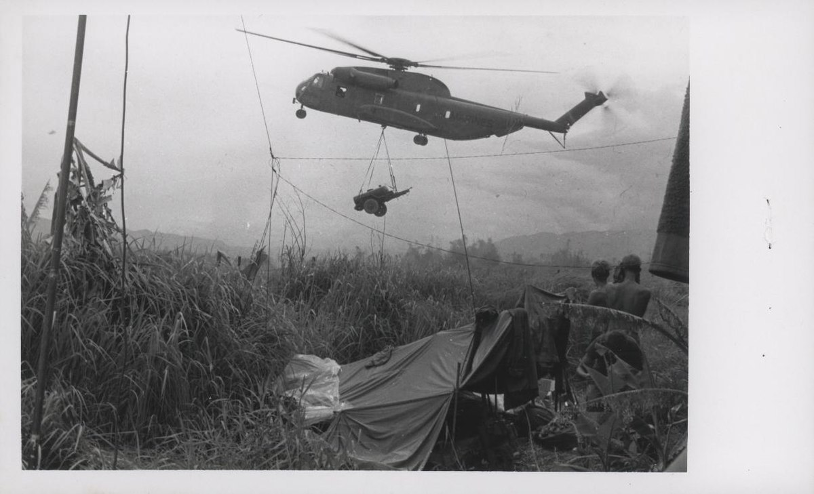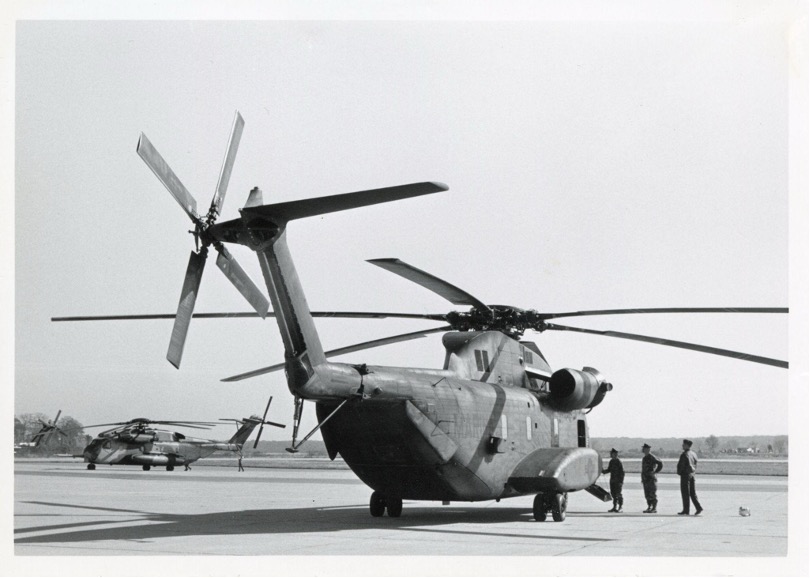CH-53s are a family of helicopters known for their heavy lift capabilities, longevity, and technological innovations in avionics. The CH-53 rose to prominence in the 1960s during the Vietnam War, where their ability to lift thousands of pounds was used most often to transport cargo and troops and recover downed and damaged helicopters. Since becoming the largest helicopter in the U.S. military, each new CH-53 model has incorporated improved heavy lift capabilities, making them a huge asset to transport operations.
The release of each new CH-53 variant also brings improvements to avionics technology, such as advances in automatic flight control (fly-by-wire), communication, navigation, and threat detection. These technologies make it possible for the helicopter to be diverse in function and use, which is why the CH-53 has such a long and notable legacy within the U.S. military.
From the Collection
The museum displays the first in the family of CH-53s, the CH-53A Sea Stallion. The Sea Stallion will be housed in the Innovation Nation Exhibition of the Main Gallery.

CH-53 delivers a water trailer to Company H, 2/5 Marines near An Hoa 1968[1]

This image is scanned with permission from the aircraft’s files at MCAS New River and is a great example of the CH-53A/D helicopter in action.
CH-53A Specifications
Type: Twin-turbine assault transport helicopter
Crew: 3 (2 pilots and 1 crew chief)
Manufacturer: Sikorsky
Weight: 22,444 lbs (empty), up to 50,000 lbs max takeoff weight
Main rotor diameter: 72 feet, 3 inches
Length: 88 feet
Height: 25 feet
Engine: x2 General Electric T64-GE-6 turboshaft engines
Max speed: 195 mph
Range: 621 miles
Flight ceiling: 21,000 feet
Armament: Up to 8,000 lbs cargo or 13,000 lbs sling load; door-mounted M60 7.62 mm machine guns
[1]https://commons.wikimedia.org/wiki/File:CH-53_delivers_a_water_trailer_to_Company_H,_2.5_Marines_near_An_Hoa.jpg
